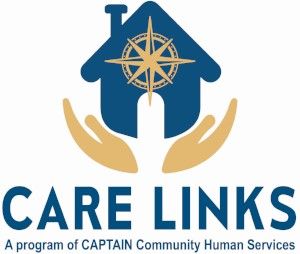
Linking those in need with those who care...
Care Links is a proud program of CAPTAIN Community Human Services. Trained Care Links volunteers provide supportive services at no cost to persons 60+ in the towns of Ballston (including Burnt Hills), Charlton, Clifton Park, Halfmoon, Malta, the village of Ballston Spa, and the city of Mechanicville.
Care Links helps to keep people living independently in their homes as long as possible without duplicating other, well-established services. Those services include:
- Friendly visiting
- Transportation
- Respite assistance
- Shopping and errands
- Light housekeeping and chores
- Telephone reassurance
- Information and referral
Care Links is staffed by the Program Manager, Terra Maddalone-Ristau, program assistants, and volunteers.
The program receives funding from the Saratoga County Department of Aging & Youth, the Towns of Ballston, Clifton Park, Halfmoon, and Malta, the New York State Office for the Aging, and participant and community contributions. Various fundraising events are held to support the core operational needs of Care Links.
For more information on Care Links, please contact us by calling 518-399-3262.
Volunteers
Volunteers are the core of Care Links without whom there would be no program. Care Links volunteers are very special people giving their time and commitment to improve the quality of life for our most vulnerable citizens and their families.
Volunteer Application Process
The volunteer application process involves an application, background check, DMV check, and auto insurance check. Once approved, volunteers attend an Orientation Session and are provided with a manual with a wide range of helpful information on each service, scheduling, their responsibilities, and emergency responses. When a care receiver is identified and a match made, an introductory meeting between the volunteer, caregiver, and senior will be arranged by staff. Once services commence, the volunteer is responsible to report monthly on the support provided, hours provided, and miles driven.
If you have questions about volunteering, please contact Care Links by calling 518-399-3262.
Volunteer Recognition
While volunteers are not compensated in any way, they are personally rewarded through their participation and support given to a care receiver and, in some cases, to a family member. To honor them and acknowledge their ongoing commitment to Care Links, a recognition event is held periodically.








